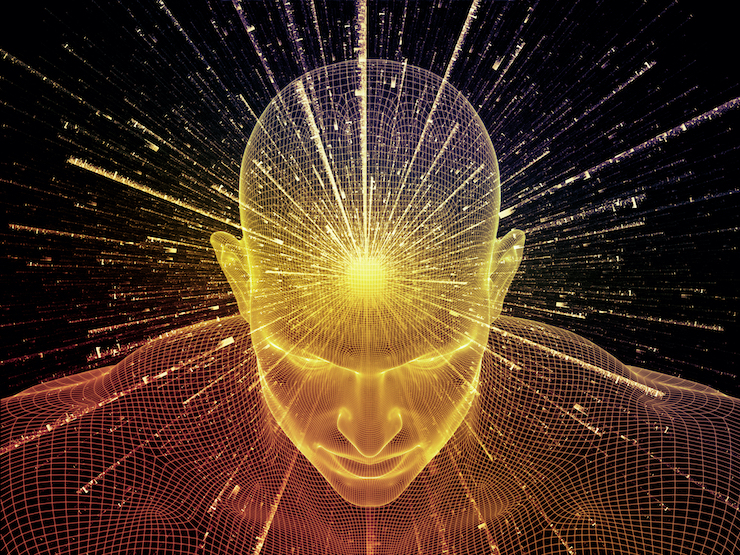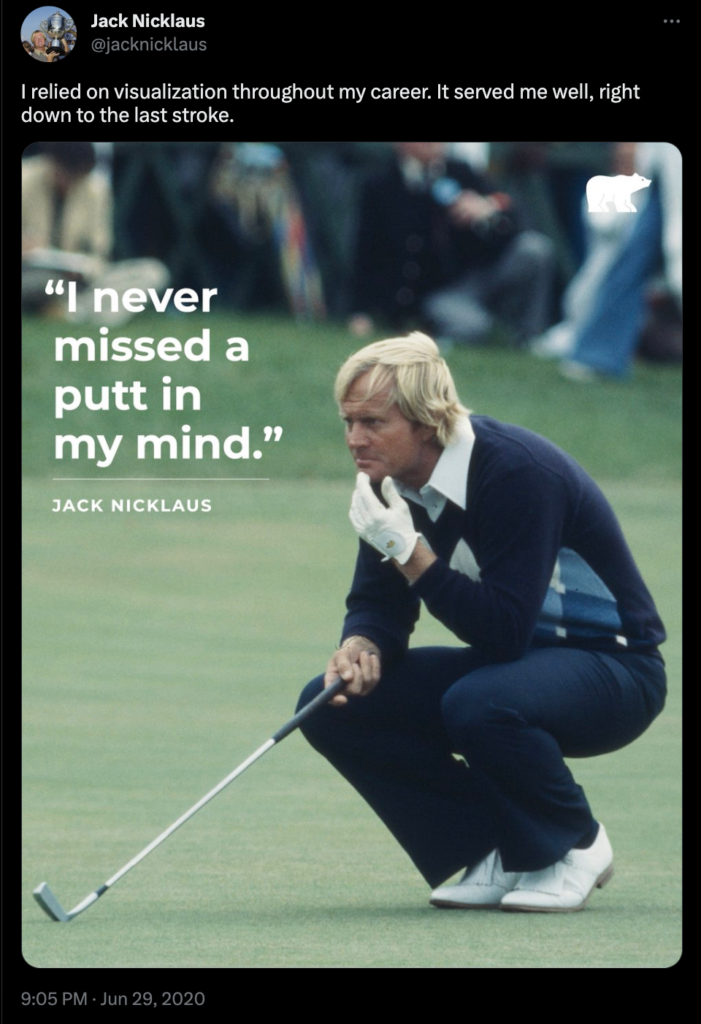Using Golf Visualization and Imagery to Improve Your Game
Have you ever heard of the term “golf visualization”? It refers to using imagery to help improve your golf game. Visualization has been used in sports psychology for years and has proven to be an effective tool for golfers looking to improve their skills and results. In this article, we’ll take a closer look at golf visualization, its effectiveness, and how you can use it to improve your game.
What is Golf Visualization?
Golf visualization uses mental imagery to create a detailed picture of a desired outcome or scenario in the golfer’s mind.¹ By visualizing different scenarios, shots, or holes, golfers can prepare for various situations on the course and develop a stronger mental game.²
The Effectiveness of Golf Visualization:
At its core, visualization helps golfers develop a more consistent swing, reduce anxiety and tension on the course, and improve their overall performance.
Numerous studies have shown the effectiveness of visualization in sports psychology, and golf is no exception. A study by the University of Southern California found that golf visualization techniques can improve a golfer’s performance on the course.³ The study involved dividing golfers into two groups, one that practiced physical drills only and another that combined physical drills with visualization exercises. The results showed that the group that practiced visualization exercises in addition to physical drills saw a greater improvement in their performance compared to the physical drills-only group.
Another study by the University of Edinburgh found that visualization exercises can help golfers improve their overall mental game.⁴ The study involved golfers performing visualization exercises that focused on improving their focus, concentration, and confidence on the course. The results showed that the golfers who performed the visualization exercises saw a significant improvement in their mental game compared to the control group that did not perform the exercises.
Yet another study in the Journal of Sport and Exercise Psychology found that putters who used visualization (focusing on sight and sound) improved putting performance more than the control or writing group.⁵
And, of course, every golfer is familiar with the legend Jack Nicklaus. He’s widely regarded as one of the greatest golfers of all time—and is known to have used visualization techniques to prepare for his shots. Nicklaus would mentally rehearse each shot in his mind before taking it, visualizing the trajectory of the ball and the precise landing spot he wanted to hit.
How to Perform and Use Golf Visualization
A way to approach golf visualization is to consider it a supplementary form of practice. The icing and cherry on your cake. The butter on your bread. You get it. If you are serious about your game, you probably already dedicate five to 15 hours per week to physical practice. All it takes is investing a few minutes per day on your mental practice, and you’ll be maximizing your potential for improvement.
Successfully performing golf visualization requires three steps:
- Take a first-person perspective. Close your eyes, and visualize through your own eyes—i.e., from your perspective—as if you were replaying a memory of successful shots in the past.
- Use all five senses, if you can. It’s essential to make these images very real and vivid. Your imagery should include sounds, smells, and tactile feelings, for example, the noise from the birds, the smell of the grass, and the feel of the club. If you’ll be drinking or nibbling something, you can visualize the taste, too.
- Make it perfect and visualize a successful shot. Ensure your visualization is a successful projection—imagine the feeling and sound of a perfectly struck ball, and picture it flying through the air and landing exactly where you want it to. The more ‘perfect practice’ you have, the more you’ll build confidence and trust in your swing.
When to Use Golf Visualization
There are many ways to incorporate golf visualization into your game. Our unique training system and framework include innovative ways to use golf imagery and visualization as components of a successful training plan. But in the meantime, here are a few ideas to get you started:
Practice Type 1: During Pre-Competition to Prepare for Different Scenarios
Visualize when you have some quiet and calm down time, for instance, just before bed or when you wake up in the morning. Take three to four minutes and imagine different scenarios you may encounter on the course, such as a tough lie or a challenging bunker shot. Visualize yourself successfully navigating these situations and making the perfect shot. A calm environment without disruptions should allow you to focus on making vivid and successful first-person images.
Practice Type 2: Use Golf Imagery During Practice
Incorporate visualization exercises into your practice routine. For example, before hitting a shot, close your eyes and visualize the shot you want to make. Remember to incorporate all five senses, if practical, and use a first-person perspective. Then, take the shot and see how closely it matches the image in your mind.
Additional Golf Imagery Techniques to Build Mental Toughness
We’ve also found three styles of golf visualization to practice: you can imagine a single rep, a sequence of reps, and a highlight reel of your best sequences. We incorporate these styles within our mental training system, where we take good athletes and make them great.
Conclusion
Golf visualization is a powerful tool that can help golfers improve their mental game and overall performance on the course. By incorporating visualization exercises into your routine, you can build confidence, improve your focus, and become a better golfer.
Ready to take your mental game to the next level? Our mental training program has helped golfers of all levels, from absolute beginners to seasoned tour professionals, become more confident, calm, carefree, focused, and motivated. Contact us today and start seeing results on the course.
—MTI
References
1 Cooley, S., & Cooley, J. (2010). The Power of Visualization: Turning Imagery into Results. Human Kinetics.
2 Taylor, J. E. (1995). The use of mental imagery by professional golfers. The Sport Psychologist, 9(3), 245-251.
3 Parker, J. M., & Lovell, G. P. (2008). Effects of a mental imagery rehearsal intervention on golf performance. International Journal of Golf Science, 6(1), 61-74.
4 Cumming, J., & Ramsey, R. (2009). Imagery interventions in sport. Human Kinetics.
5 Smith, D., & Holmes, P. (2004). The effect of imagery modality and imagery ability on golf putting performance. Journal of Sport Behavior, 27(4), 313-328.



